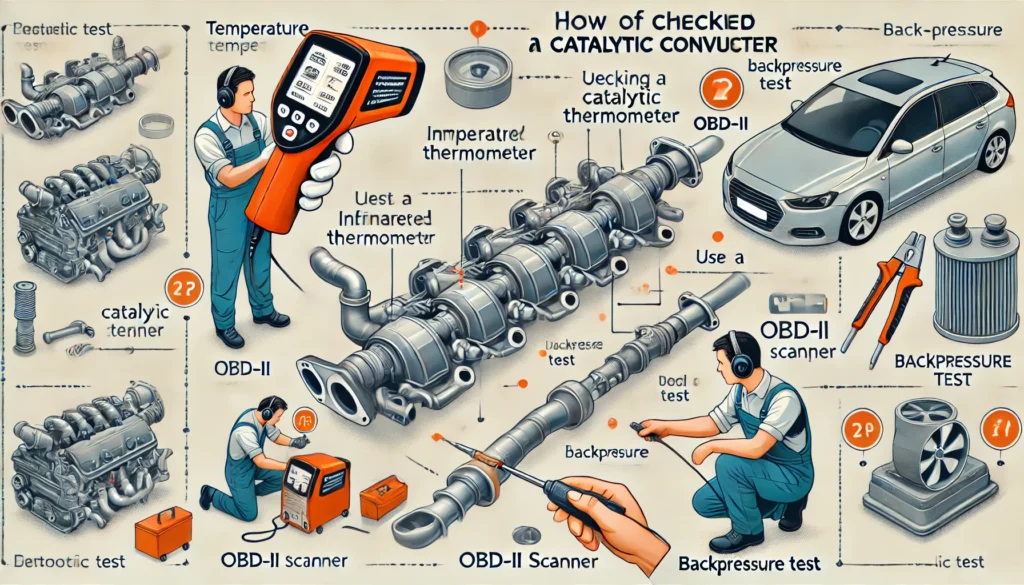When a catalytic converter becomes clogged, it can severely impact your vehicle’s performance, leading to issues such as reduced acceleration, overheating, and even engine stalling. Understanding how to check if a catalytic converter is clogged is crucial to maintaining your vehicle’s health. In this guide, we’ll explore the symptoms of a clogged converter and the steps you can take to diagnose the problem.

Symptoms of a Clogged Catalytic Converter
Identifying the signs of a clogged catalytic converter is the first step in addressing the issue:
- Reduced Engine Performance
- A clogged converter restricts exhaust flow, leading to noticeable reductions in engine power and acceleration. If your vehicle struggles to gain speed or feels sluggish, it could be due to a clogged converter.
- Dark Exhaust Smoke
- Excessive backpressure in a clogged converter can cause incomplete combustion, resulting in dark or black smoke from the exhaust.
- Check Engine Light
- The check engine light may activate when sensors detect issues with the exhaust system, often pointing to a problem with the catalytic converter.
- Rattling Noise
- If you hear a rattling sound coming from under your vehicle, it could be due to internal damage within the catalytic converter caused by clogging.
- Overheating
- A clogged catalytic converter can cause your engine to overheat due to restricted airflow. Overheating can lead to further engine damage if not addressed promptly.
Steps to Check if a Catalytic Converter Is Clogged
Here are some methods to determine if your catalytic converter is clogged:
1. Temperature Test
- Use an infrared thermometer to measure the temperature at the inlet and outlet of the catalytic converter. In a properly functioning converter, the outlet temperature should be higher than the inlet. If the outlet is cooler or the same temperature, the converter is likely clogged.
2. OBD-II Scanner Test
- Connect an OBD-II scanner to your vehicle’s diagnostic port to check for any error codes related to the catalytic converter. Common codes like P0420 or P0430 indicate that the converter is not functioning efficiently, possibly due to clogging.
3. Backpressure Test
- An exhaust backpressure test measures the pressure before and after the catalytic converter. High pressure readings before the converter suggest that it is clogged and restricting exhaust flow.
4. Visual Inspection
- Inspect the catalytic converter for visible damage such as dents, cracks, or excessive rust. Any physical damage could indicate that the converter is compromised and potentially clogged.
5. Listen for Unusual Noises
- Start the vehicle and listen for any rattling sounds from the catalytic converter area. This noise may indicate that the internal components of the converter have broken apart due to clogging.
Conclusion
A clogged catalytic converter can lead to a range of vehicle performance issues, from reduced acceleration to engine overheating. By performing a temperature test, using an OBD-II scanner, and conducting a backpressure test, you can accurately diagnose whether your catalytic converter is clogged and take the necessary steps to address the problem.
